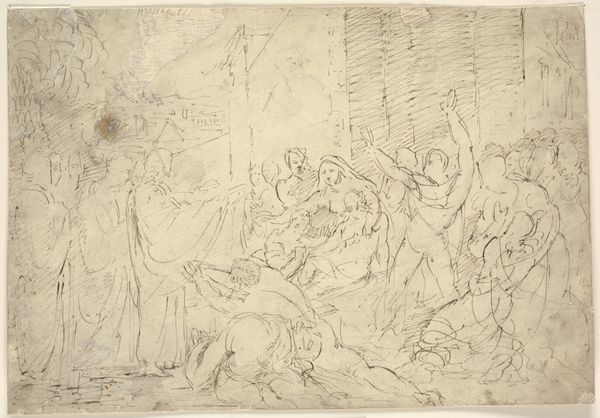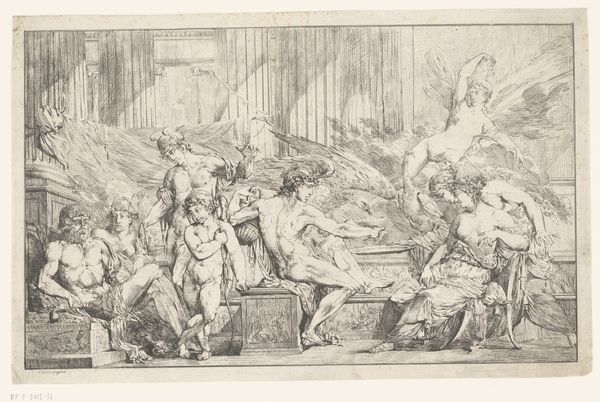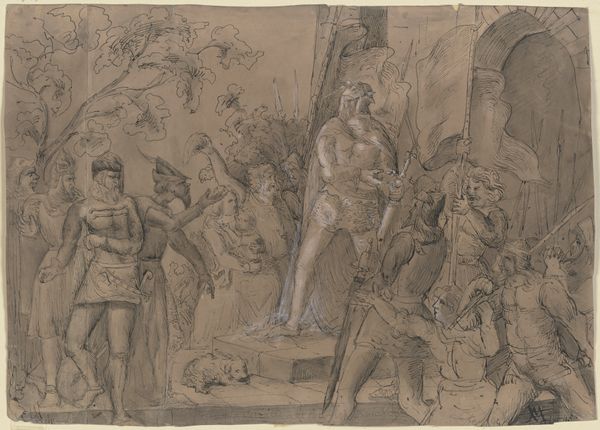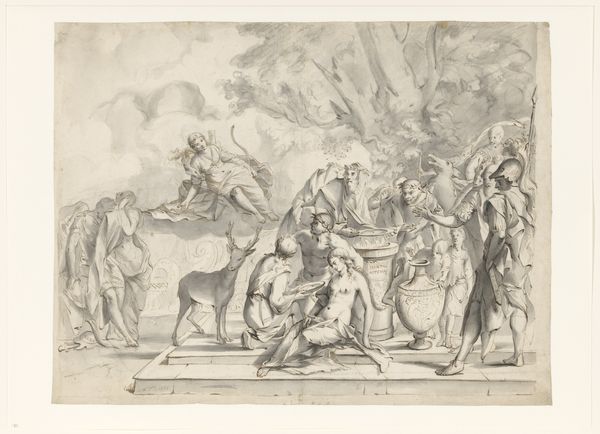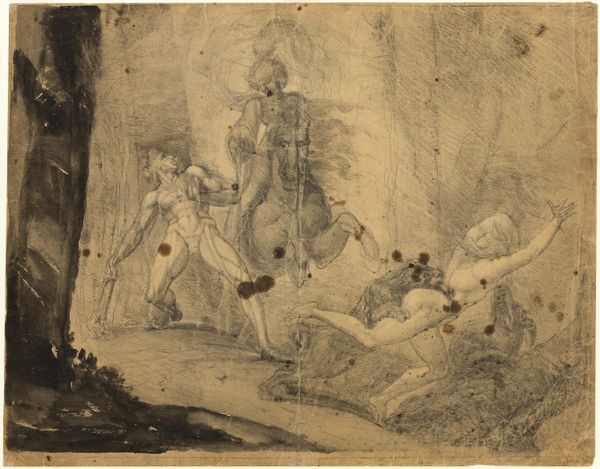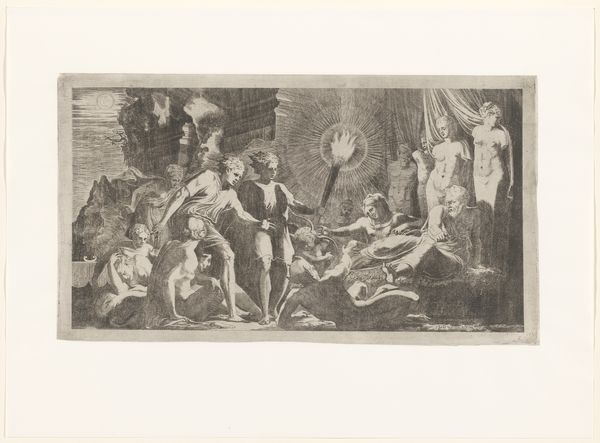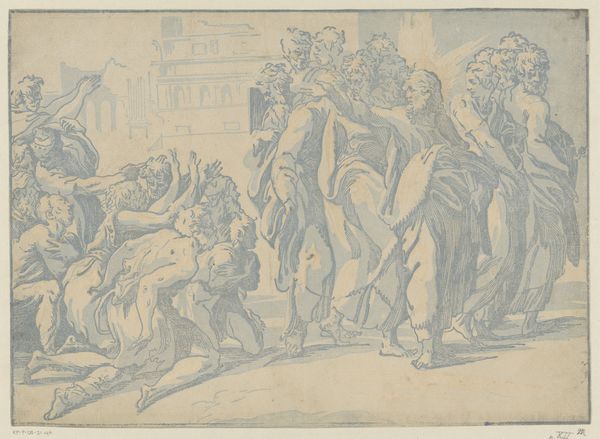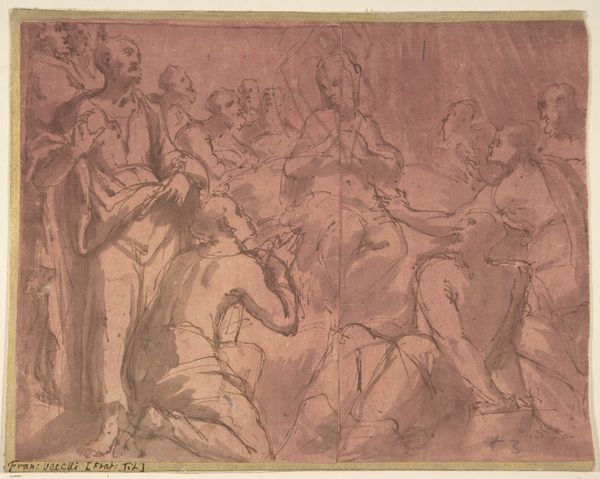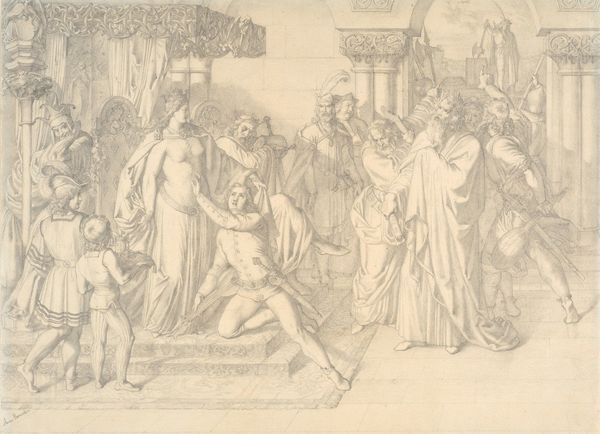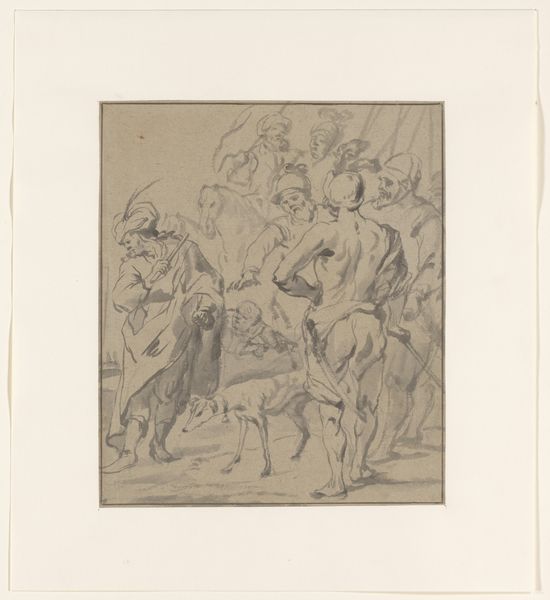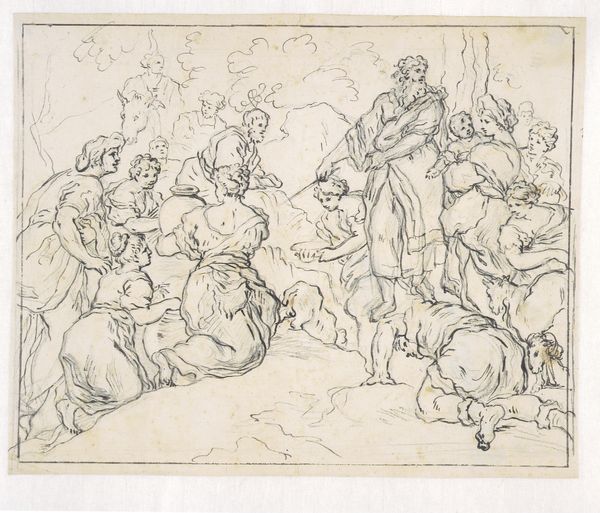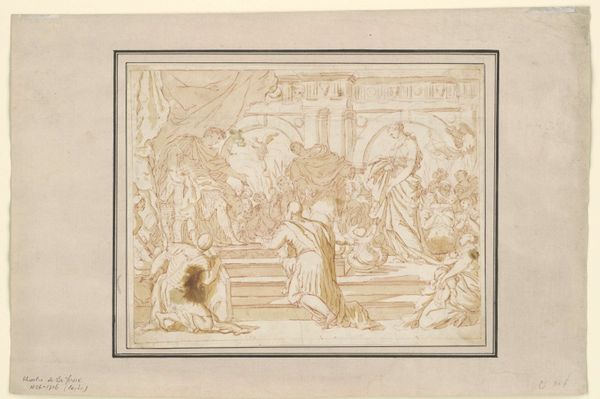
drawing, ink, chalk, graphite
#
drawing
#
narrative-art
#
baroque
#
french
#
pencil sketch
#
old engraving style
#
etching
#
figuration
#
ink
#
chalk
#
graphite
#
history-painting
Copyright: Public Domain
Curator: The artwork before us, "The Death of Germanicus," attributed to Nicolas Poussin, presents a scene of historical significance rendered in graphite, chalk, and ink. The dramatic composition immediately catches the eye. Editor: Yes, I'm struck by the raw energy in this sketch, even with the muted tones. The artist's hand is evident in every line. The texture practically screams off the paper. Curator: Indeed. Poussin, of course, was a master of the Baroque style, which thrived on precisely this kind of dynamism. The scene depicts the Roman general Germanicus on his deathbed, surrounded by grieving family and soldiers. It reflects a pivotal moment of imperial transition. Editor: I’m thinking about the sheer labor it took to prepare these drawing materials and even the specific social circumstances around graphite, chalk, and ink-making in Poussin’s time. Did he have assistants? Who ground the pigments? It all informs our understanding of the final image. Curator: Good points. In many ways the scene reflects prevailing concerns about justice and succession that would have resonated with the aristocracy who collected his works. Poussin here visually translates stoic philosophy for an elite audience. Editor: It also speaks volumes that Poussin chose these materials. Was it ease of access? A commentary through restraint? The monochromatic palette almost directs our attention to the emotional labor represented here; all this collective grief, made manifest in physical actions. Curator: It's a drawing ripe with symbolism. Gestures become grand pronouncements and personal reactions are almost operatic in scale. Each figure, meticulously rendered, serves as a study in classical sorrow. Editor: Agreed, the way Poussin used accessible and readily available materials invites a more intimate experience for viewers. And while it's hard not to get caught up in its social implications, I keep going back to the sheer making, the process by which human suffering takes material form through labor and expressive craft. Curator: Well said, exploring art history through cultural norms and tangible artistry, is a path to discovering multiple perspectives. Editor: Exactly, a focus on social context through materiality provides a powerful lens to see the past.
Comments
No comments
Be the first to comment and join the conversation on the ultimate creative platform.

